Light tank Pioneer Tractor Skeleton Tank (USA)
The early rhombic tanks had a specific undercarriage, the tracks of which fully embraced the hull side compartments. This allowed them to climb various obstacles, but at the same time led to an increase in the size of the machine. As a result, a large and sluggish tank risked becoming a target for enemy artillery. It was obvious that in order to further improve the basic characteristics, some processing of the existing technical appearance is required. Later work in this direction will lead to the formation of an architecture that is now considered classical. However, until a certain time, designers tried to improve the existing diamond-shaped design.
In 1917, the American firm Pioneer Tractor Company from Winona (pc. Minnesota) made a proposal concerning the further development of armored vehicles. The experience of operating existing tanks showed that light tanks showed the highest mobility characteristics. At the same time, in permeability, they seriously lagged behind the larger and heavier lozenges. In its new project, the American company offered to combine the main features of tanks of different classes, which, as expected, would have provided the desired combination of basic characteristics.
The original layout and design ideas were worked out by a team of engineers led by Edwin M. Wheelock. Specialists studied the pros and cons of existing technology, and based on the results of such analyzes, they found the optimal scheme for a promising light tank with maximum mobility. The new project decided to abandon the use of a large hull, which serves as the basis for the undercarriage. The latter was to be fixed on a special frame of the required shape. Because of this, the new model of armored vehicles was called Skeleton Tank - “Skeleton Tank”. In addition, some publications mention the alternative name Spider Tank (“Spider Tank”), indicating the specific appearance of the machine.
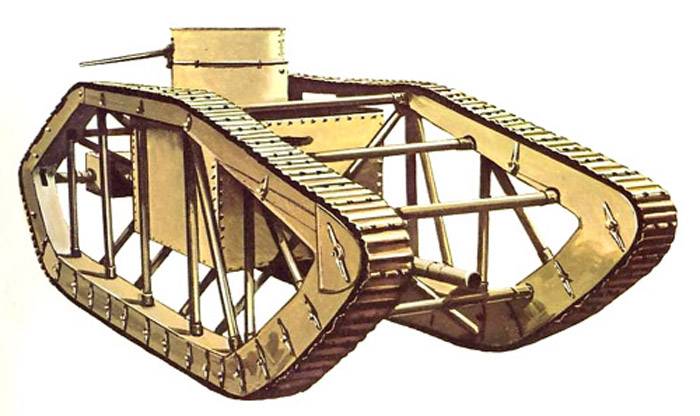
Modern reconstruction of the appearance of the armored vehicle. Figure Alternathistory.com
The main problem of the existing rhombic tanks was the need to use a long and high armor corps, characterized by a large mass. E. Wheelock and his colleagues decided to abandon such a unit and place all the necessary equipment in a smaller case. Even taking into account the need to use various remote devices, such a scheme allowed us to obtain noticeable mass savings. According to various estimates, the new "Skeleton Tank" could be almost twice as light as a diamond-shaped machine of similar size.
The new tank Pioneer Tractor Skeleton Tank received the most simple hull needed to accommodate the crew, weapons and power plant. In the central part of the machine, it was proposed to place a relatively compact box-shaped body assembled on bolts and rivets made of 12,7-mm armored steel. All parts of the case had the same level of protection. Such a hull occupied about a third of the total length of the car and was already noticeably track-mounted tracked. The bottom of the hull was noticeably raised above the ground, while the roof was just below the upper branch of the caterpillar.
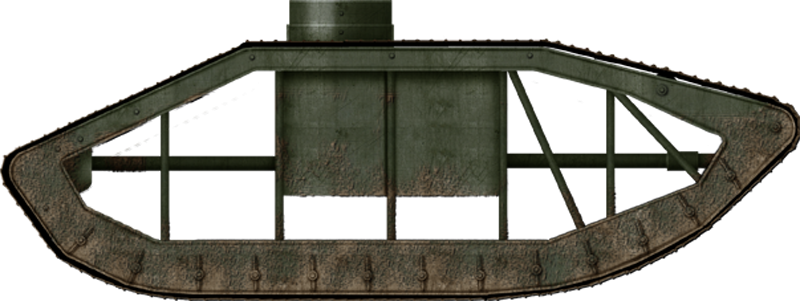
View of the starboard. Figure Tanks-encyclopedia.com
The corps should be made of six rectangular armor plates of the required size. They were assembled in a parallelepiped, which had an upper hatch for the installation of the tower, viewing slots and windows for the installation of various equipment. In the front part, at the sides, two engines were placed, between which there was a workplace for the driver. The remaining volumes were given under the installation of radiators and fuel tank, as well as under a kind of combat compartment.
It was proposed to install a low cylindrical tower with a single frontal embrasure on the roof of the hull. "Skeleton Tank" attributed to the light class, and therefore felt that it can be equipped only with machine gun weapons.
On the sides of the hull should have been located larger elements of the tracked propulsion. The project proposed to build a spatial structure of metal pipes, wooden beams and sheet armor. The assembly of a large ring aggregate close to an oval shape was envisaged. Its front part had an inclined lower element, which was necessary for a simpler climb on an obstacle. Above it were more gentle details. The central parts of the lateral aggregates were located vertically. The feed was formed by several converging details. The tubular frame of such a unit had several horizontal power elements connected by five vertical and two inclined racks.
Two elements of a tracked propulsion unit were connected to each other using several horizontal pipes. In addition, before the main body and behind it, the tubes formed an X-shaped structure with a hinge in the center. Thus, the tracked chassis was based on a rigid truss of pipes, and the body had to be suspended inside it. For a certain compensation of vibrations of the machine, the original case fixings were used. On its frontal and stern sheets were placed longitudinal tubes that were included in the corresponding rings of X-shaped structures. Thanks to this, the body could swing a little along the roll, compensating for the chassis tilt.
In front of the hull it was proposed to mount the power plant in the form of a pair of four-cylinder gasoline engines of the Beaver brand. Each of them developed power up to 50 hp. and had a fluid cooling system. Next to the engines was a fuel tank with a capacity of 17 gallons (64,35 l). The engines were connected to the original transmission, which provided the drive for the stern driving wheels.
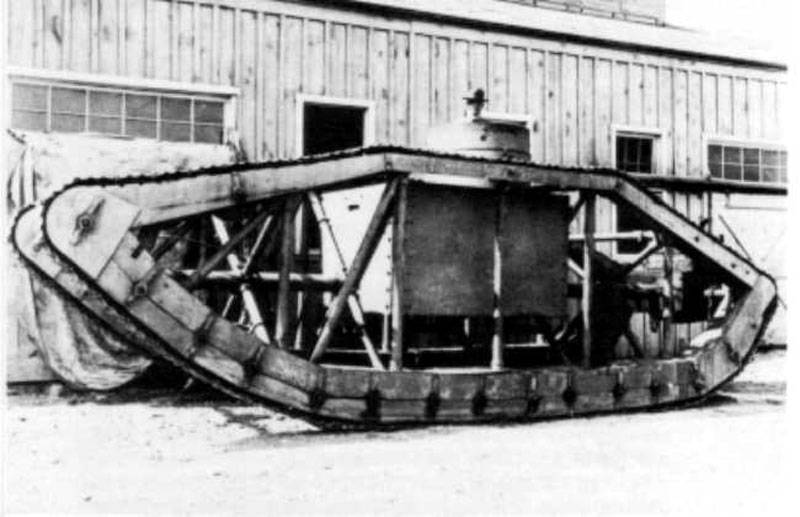
"Skeleton Tank" in the factory. Photo Aviarmor.net
The case of minimum dimensions, located near the center of gravity, could not accommodate all the necessary devices. For this reason, part of the transmission units was moved beyond its limits. The torque of the two engines was given to special gearboxes connected to a pair of aft drive shafts. The latter were removed outside the main body and placed on the sides of the pipe-support body. At the stern of the chassis was a relatively compact box-like casing with other transmission devices. With their help, power was transmitted to the drive wheels.
Despite the original design of the chassis frame, the undercarriage for Skeleton Tank was created using the latest developments of the time. At the bottom of the side frame, the 13 mid-size track rollers were placed. The rollers were rigidly attached to the frame and were not equipped with a suspension. The central rollers rested on the ground, while several front and rear rollers were raised above it and served as tension wheels. The guide wheel was placed in front of the track. The upper branch lay on five supporting rollers of large diameter. A large steel caterpillar of medium width was used.
Light "Skeleton Tank", according to the idea of its creators, did not need powerful weapons. It was supposed to equip only one machine gun rifle caliber. Initially, the Browning M1917 machine gun with a water-cooled barrel could be considered in this role. Weapons should be installed in the front embrasure of the tower. Horizontal orientation and vertical guidance within a particular sector had to be carried out manually.
The crew of the tank of unusual design consisted of only two people. In front of the case was the workplace of the driver. He was asked to follow the road with a single viewing slot in the front sheet. The controls at the driver’s station were connected to the engines and gearbox using a mechanical connection. The control of the feed devices of the transmission, which were placed in a separate casing, was carried out with the help of rods passing through the pipes of the cardan shafts.
Directly behind the driver was the commander, who also served as an arrow. He had to monitor the situation, search for targets and use a machine gun. Search targets and aiming weapons carried out using the standard embrasure machine gun. In addition, the observation using a manhole in the roof of the tower was not excluded. However, this hatch, first of all, was intended for landing in a tank. Other means of accessing the inside of the case were not provided.
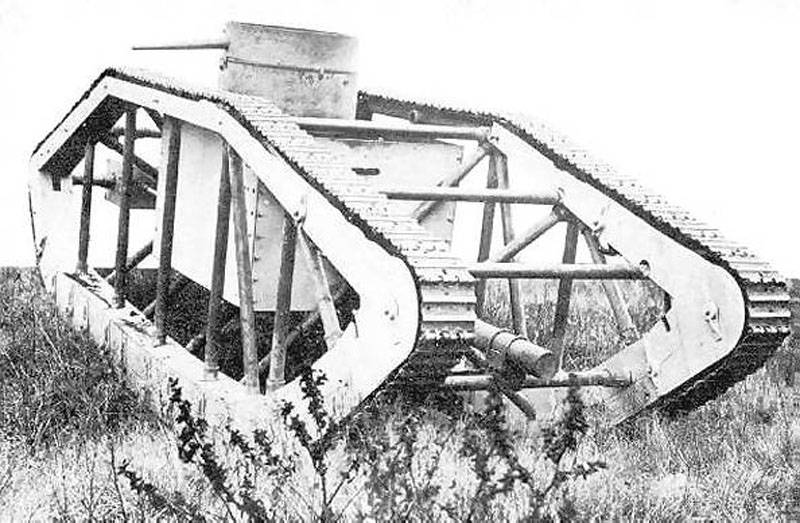
The armored vehicle descends from a low slope. Photo Aviarmor.net
The promising light tank Pioneer Tractor Skeleton Tank was significantly larger than other cars of its class, but it only slightly lost to them in weight. The length of the vehicle was 7,62 m, width - 2,56 m, height - 2,89 m. The combat weight was only 9,15 t. Thus, the "Skeleton tank" was noticeably lighter than other vehicles with similar chassis. For example, the British diamond-type armored vehicles, which had similar dimensions, weighed at least 20-25 T. Thanks to the reduction in weight, it was possible to obtain a high power density — more than 11 hp. per ton, which was also a noticeable advantage. It was possible to reach a speed of at least 8-10 km / h and travel at a single gas station to 50-55 km of track.
The first prototype of the new light tank was built and put to the test at the start of the 1918. According to some reports, the car built soon became the property of the US Army, which later determined its fate. Before discussing the prospects and future of the original machine, it should be tested at the test site. The Aberdeen Proving Ground became a platform for testing an unusual light tank.
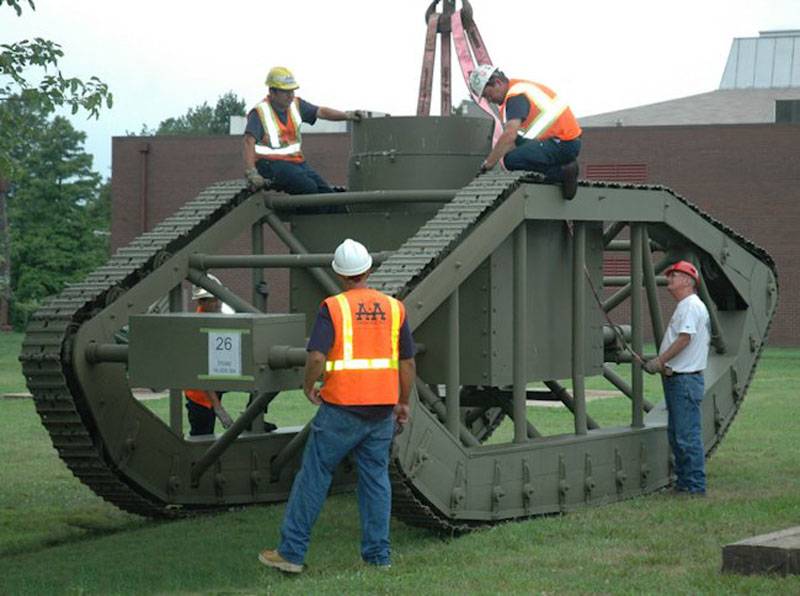
Museum sample during restoration. Photos of Tanks-encyclopedia.com
Known characteristics and design parameters suggest that the new armored vehicle will be able to show itself well during the tests. Indeed, a sufficiently high power density has made it possible to achieve high mobility both on good roads and on rough terrain. The "skeleton tank" differed from other armored vehicles of its class in faster acceleration, improved off-road maneuverability and some of its other features. In addition, unlike other tanks, it could cross ford shallow reservoirs: this possibility was ensured by the position of the bottom of the hull, which was raised about a meter above the ground.
However, it was not without problems. The dense layout of the compact hull made it difficult for the crew to work, and also interfered with the normal cooling of the engines. In addition, because of it, the transmission had to be moved to a separate casing, which led to some risks. The chassis of the tank Pioneer Tractor Skeleton Tank turned out quite difficult to manufacture and maintain. The lack of elastic suspension elements led to unacceptable vibrations of the entire machine, which seriously interfered with driving and shooting. The suspension system of the hull on the longitudinal axis with a pair of pipes in this respect has not justified itself. She parried only minor deviations in roll, while other oscillations were easily transferred to the hull.
The hull was in the center of the chassis, and the driver had only one viewing slot. Because of this, the review from his seat left much to be desired. The driver could normally monitor only a small sector of the front hemisphere, while the other space was blocked by the front part of the chassis. Without risking health and life, the commander could observe the terrain only through the sighting devices of the machine gun, and the turret hatch in a combat situation should be kept closed. It is not difficult to guess how this reduced the combat effectiveness of the tank.
An ambiguous feature of the new tank was the armament in the form of a single 7,62-mm machine gun. At the same time, there were no real opportunities to replace it with a more powerful weapon. Also on the combat potential struck unsuccessful mutual arrangement of tracks and machine guns. The upper branch of the caterpillar was above the roof of the hull, which is why it was not possible to fire towards the side with large angles of incidence. This led to the formation of large dead zones. Without serious restrictions, the commander could fire only small sectors of the front and rear hemispheres.
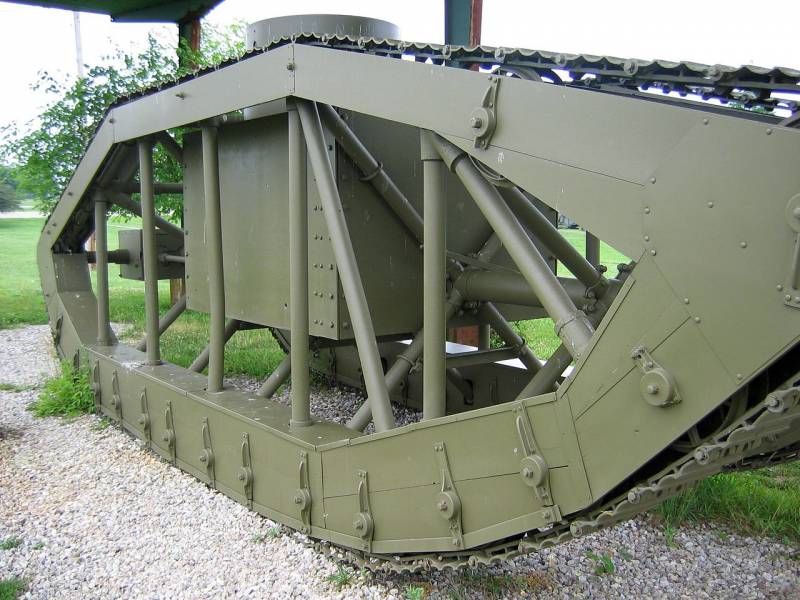
Right side of the machine. The main body and transmission cover are visible. Photo of Wikimedia Commons
Both tankers had to fall into place through a single sunroof. To do this, they were asked to first get on a fairly high car, and then climb into a small and not very comfortable manned compartment. Leaving a tank in an emergency situation on the battlefield was complex, and was also associated with noticeable risks.
The tests of the only experienced Skeleton Tank / Spider Tank from the Pioneer Tractor Company ended in the summer of 1918. The armored car of the original scheme received mixed reviews. The proposed tank was distinguished by good mobility and maneuverability, but that’s where its advantages actually ended. He was difficult to manufacture, inconvenient for the crew and showed insufficient firepower. However, it was soon decided to order such light armored vehicles. The US military wanted 1000 new Skeleton Tanks. Shortly after the signing of the relevant agreement, work began on the preparation of serial production.
However, the preparation for serial construction was not completed, and the order was canceled. The command revised its plans for the development of the Tank Army Corps, and now there was no room for the unusual Pioneer Tractor Skeleton Tank. According to the new plans, the licensed version of the French light tank Renault FT-17 now had to go into the series. For this reason, the order for "Skeleton Tanks" was canceled, and work on the deployment of their production was stopped.
It is known that almost simultaneously with the decision to abandon the “Skeleton Tanks”, the existing prototype was attracted to participate in ceremonial events. In November 1918, a celebration was held in Winona to celebrate the end of the war. An experienced light tank took part in the festive parade. Apparently, this happened after the decision was made to build French-made vehicles, so now the domestic tank performed an exclusively propaganda function.
By the time such a decision was made, only one tank of unusual design was built, intended for use in tests. At some point, this machine, built by Pioneer Tractor, became the property of the military department, which probably saved her. Unlike enterprising merchants, the military was not in a hurry to write off and dispose of unsuccessful prototypes of combat vehicles. Because of this, the only Skeleton Tank remained in storage for some time.
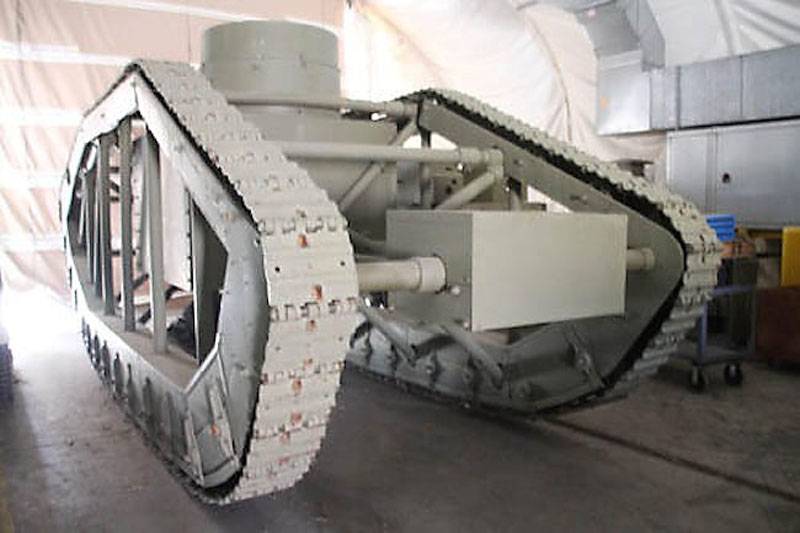
Skeleton Tank at the Fort Lee Museum Base. Photos of Tanks-encyclopedia.com
A long stay at the Aberdeen open-air range has had a bad effect on individual elements of the structure. In particular, wooden parts have rotted for several decades. At the beginning of the two thousandth's unique prototype was sent for restoration. Fortunately, the vast majority of parts did not suffer, although the wooden power elements had to be completely replaced. As a result, the tank acquired the same appearance as during the 1918 test of the year. After restoration, he was transferred to the open area of the United States Army Ordnance Museum at the Aberdeen Proving Ground. In order to avoid new damage, the car was installed under a carport.
A few years later, a unique museum piece was transported to the Fort Lee base and placed among other samples of the equipment of the time of the First World War. Unfortunately, this museum belongs to the local training center, and therefore only military personnel have access to its exhibits.
The project of a light tank Pioneer Tractor Skeleton Tank involved the use of original ideas aimed at obtaining low weight and high mobility. In general, such problems were successfully solved, but their price was the deterioration of other characteristics. The resulting armored car did not differ in convenience and high combat effectiveness, because of which it could rely on the adoption for service only in the absence of decent alternatives. However, the signing of a contract for the licensed assembly of foreign technology led to the abandonment of the Skeleton Tank. Despite all its original features and characteristics, this design could not compete with other technology based on other ideas.
On the materials of the sites:
http://tanks-encyclopedia.com/
http://aviarmor.net/
http://alternathistory.com/
http://landships.info/
https://militaryfactory.com/
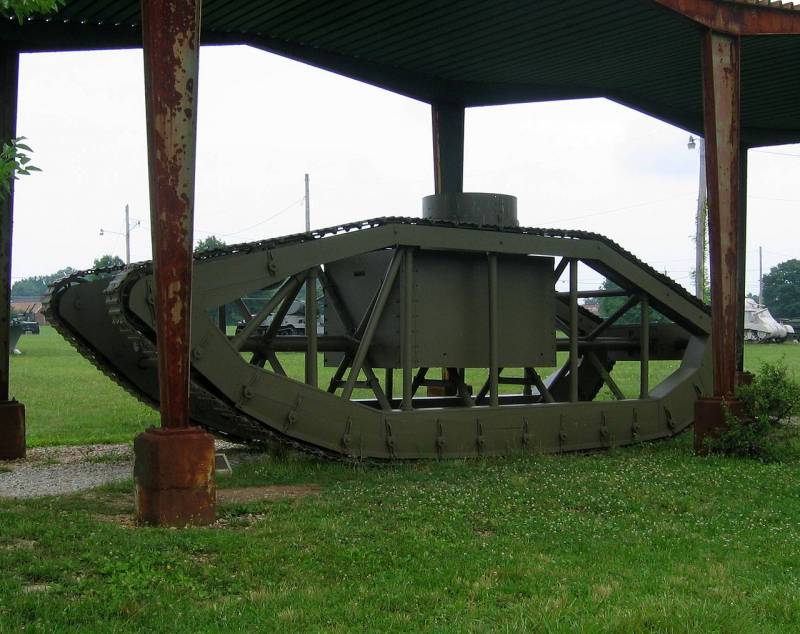
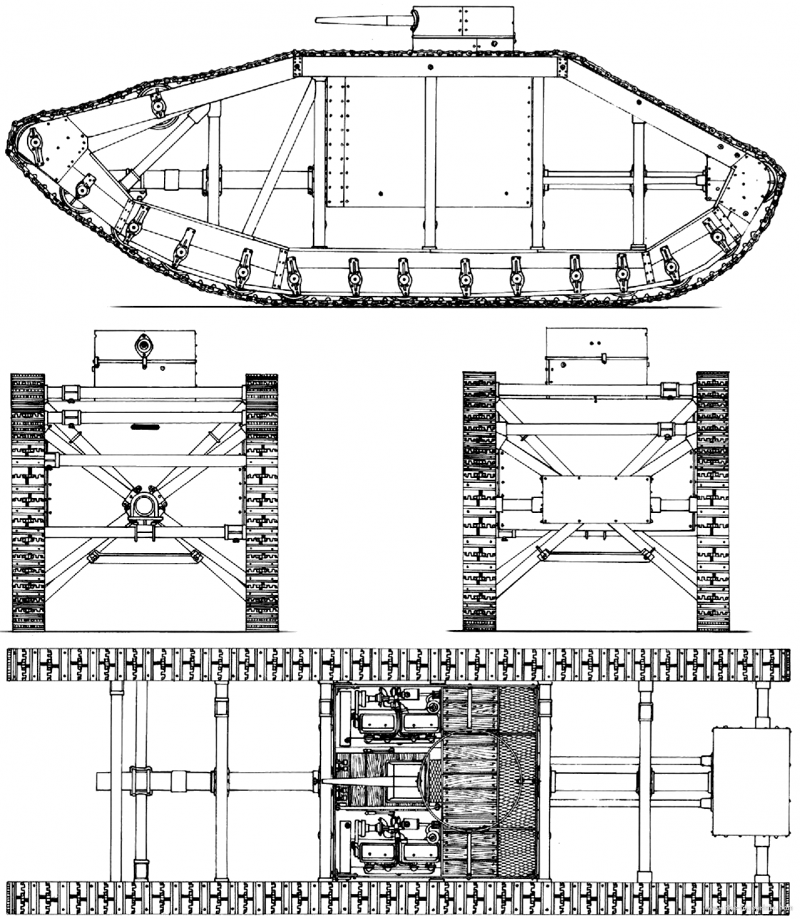
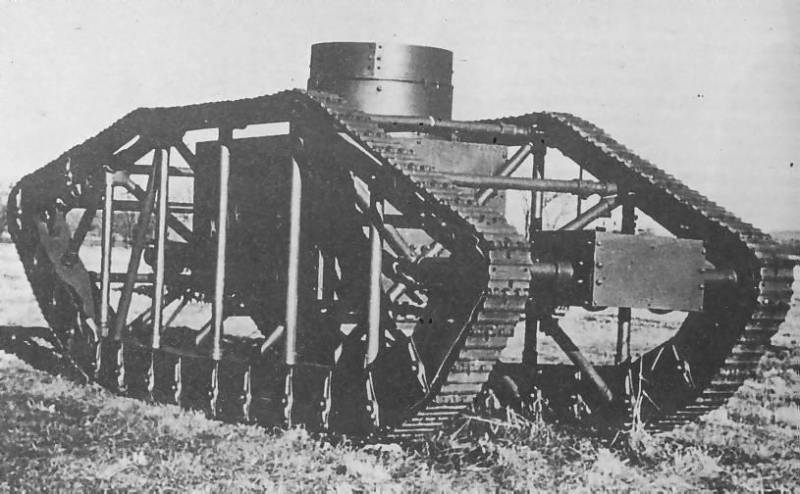
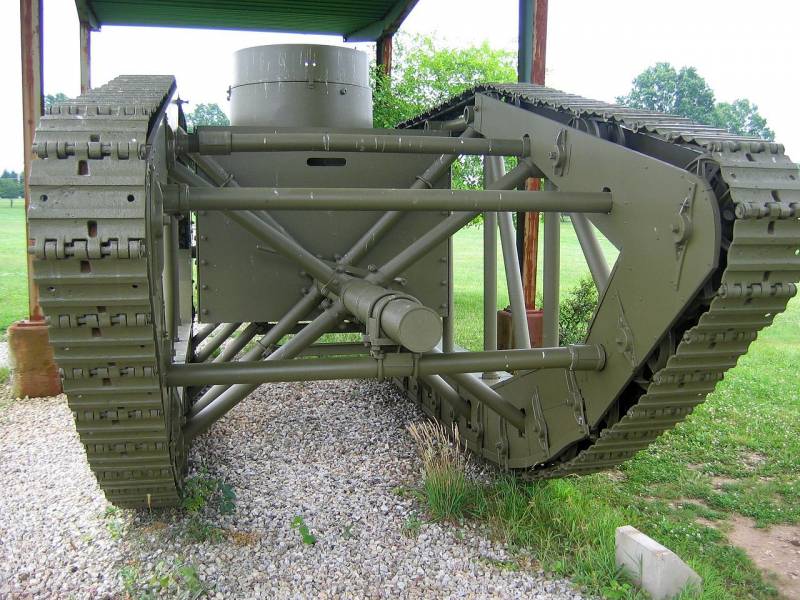
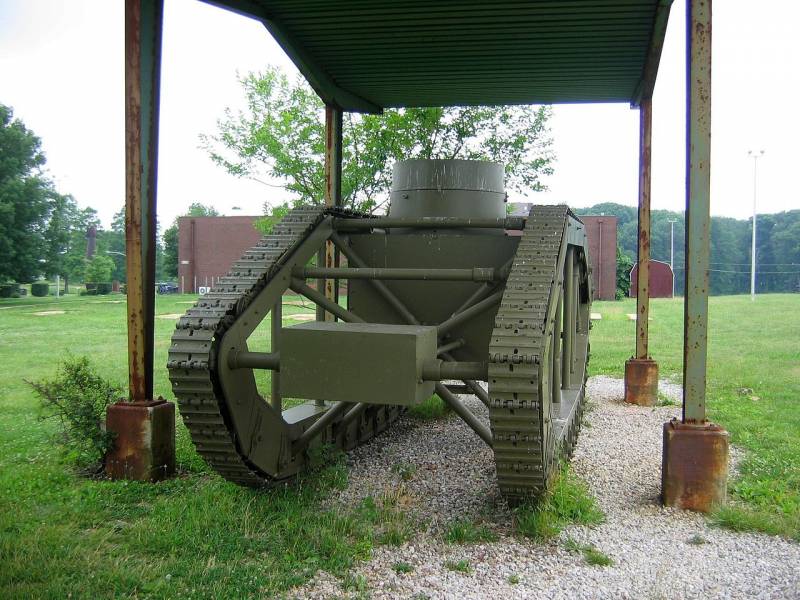
Information